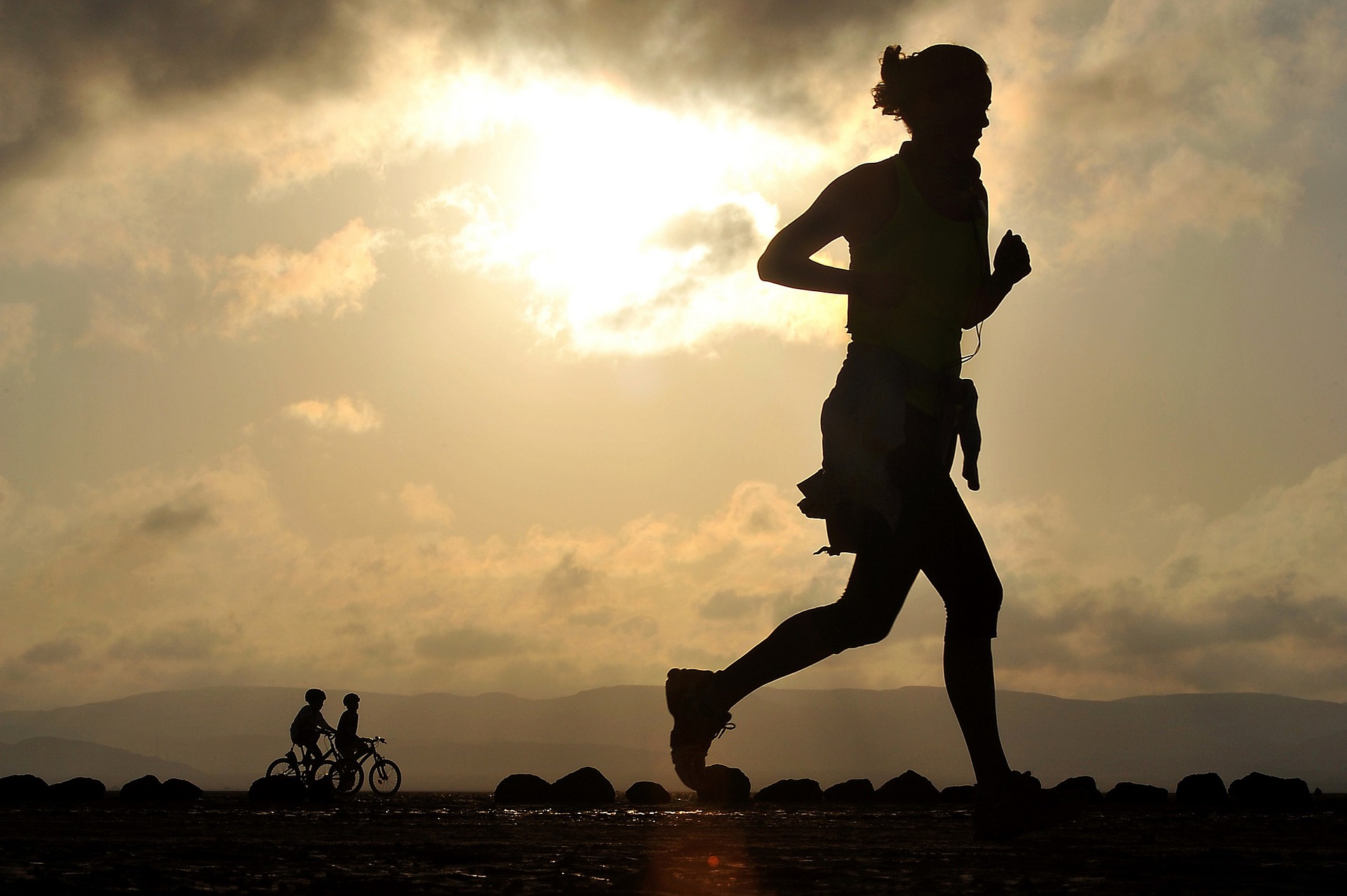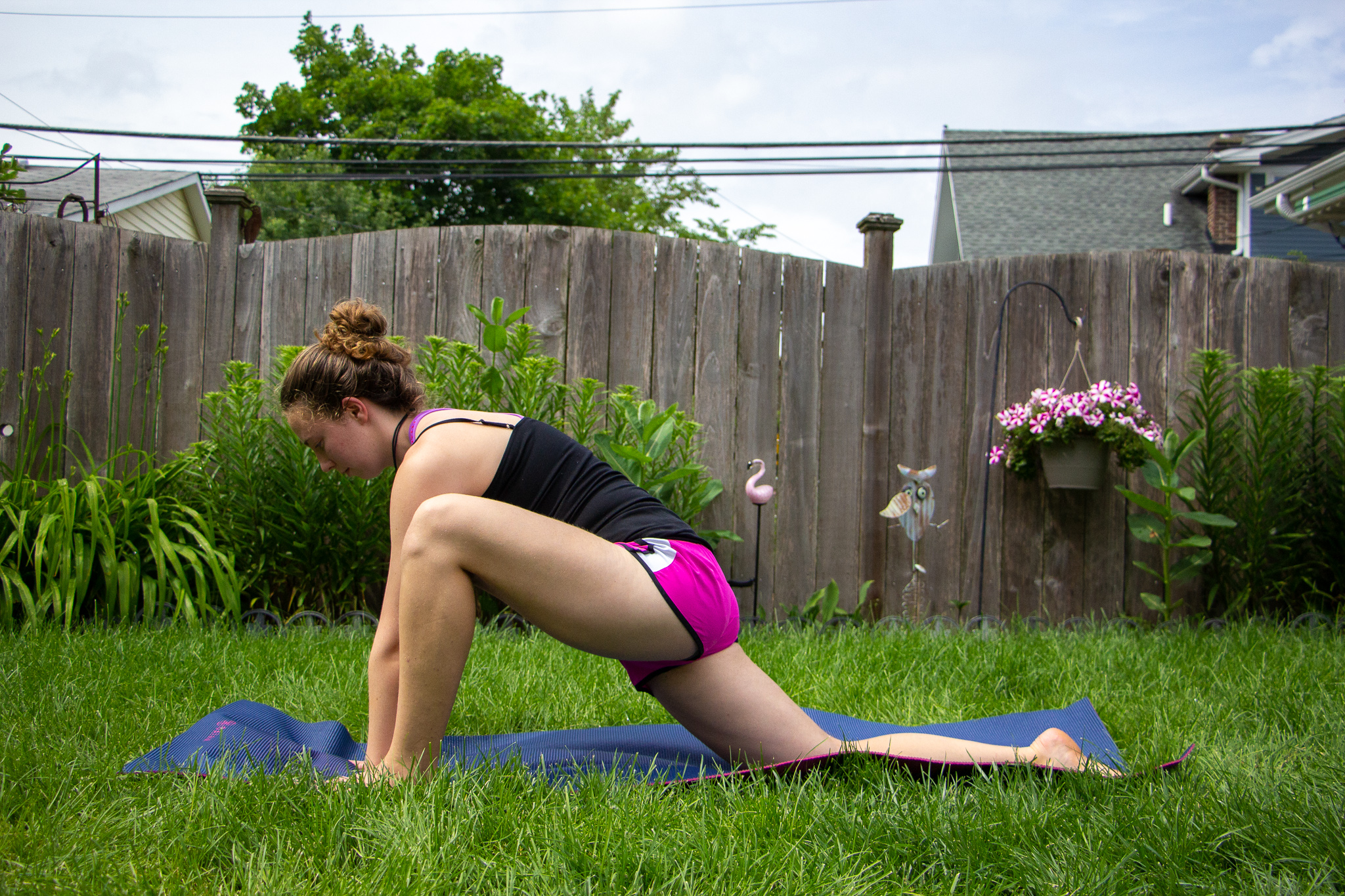The cooler months zap my energy, depress me and make leaving the house a struggle. But I am a runner with no access to a treadmill, and more importantly, I have a dog companion (Nitro) who requires frequent walks.
So I’m continually working to overcome my distaste for the cold. Unsure who spoke the phrase, but last winter I read, “There is no such thing as inclement weather, just inadequate clothing.” Inspired, I committed to maintaining my running routine. I wore multiple layers underneath a ski-suit during my runs. Initially I was warm, but eventually the clothing closest to my body was wet and clammy with sweat. Because I wasn’t staying dry, I would inevitably become cold. So I learned how to properly layer clothing for cold runs, as well as some general safety knowledge for cold weather exercise.

What to wear:
- Synthetic base layers, like polyester/elastane blends (recycled, preferably)!
In my opinion, base layers are the most important component of outdoor exercise wear. Because as mentioned above, if the clothing closest to your skin becomes wet with sweat, skin will chill. Avoid cotton at all costs, as it doesn’t wick moisture and will simply remain wet underneath all your other layers. Base layers can be medium weight or heavy weight, depending on climate and individual needs.
2. Insulating layers on top of the base.
I prefer fleece for this layer, as it provides good range of motion while still being warm. Some runners seem to opt for wool, but as a vegan I prefer to avoid wool.
3. Vest.
This is arguably an optional layer, but I find it really helps keep my core warm.
4. Wind/water resistant jacket.
On top of it all, go for a breathable wind and water resistant jacket. Clearly, a jacket that is too breathable won’t protect from the elements. And then what was the point of all those other helpful layers? I was lucky enough to find one of these secondhand and I firmly believe it would have been worth the price had I needed to purchase it new.
5. Don’t forget about socks, gloves and a hat/headband.
There is nothing worse than running in the frigid cold without something to cover your ears. Or trying to run in cotton socks. The same rules apply here. I opt for synthetic and moisture wicking materials.
Keep in mind:
Safety first! Running, or exercising at all, in the elements can be dangerous. Be mindful of your footing, as sometimes the ground may simply appear wet when it is actually frozen. A good pair of all-terrain running shoes is the safest bet, in my experience. I run a combination of trails and concrete, and I love my Brooks for their versatility, stability and impact-reducing features. And remember, shoes inform our health. I recommend getting fitted at your local running sports store, even if you’re not a runner!
Visibility is important. One of my least favorite aspects of the cooler months is the lack of sunlight. If you’re running before or after a full day of work, chances are it may be dark. Consider a head-light so your hands are free. I also prefer to avoid using headphones while running in the dark so that I can hear my surroundings clearly. But that could just be me.
If it is very windy and cold, consider trying to start the run/walk moving into the wind. If you begin exercising with your back to the wind, you may begin to feel artificially warm, which may leave you with little left to give at the end.
Personally, I find it empowering to work towards a mindset that doesn’t allow the weather to bully me into staying inside. The gray, cold weather can take a toll. But it doesn’t have to get in the way of fitness goals! Proper clothing, and a bit of psychological preparation, can go a long ways.
Get more like this—Sign up for our daily inspirational newsletter for exclusive content!
__
Photo: Fil Mazzarino via Unslpash




